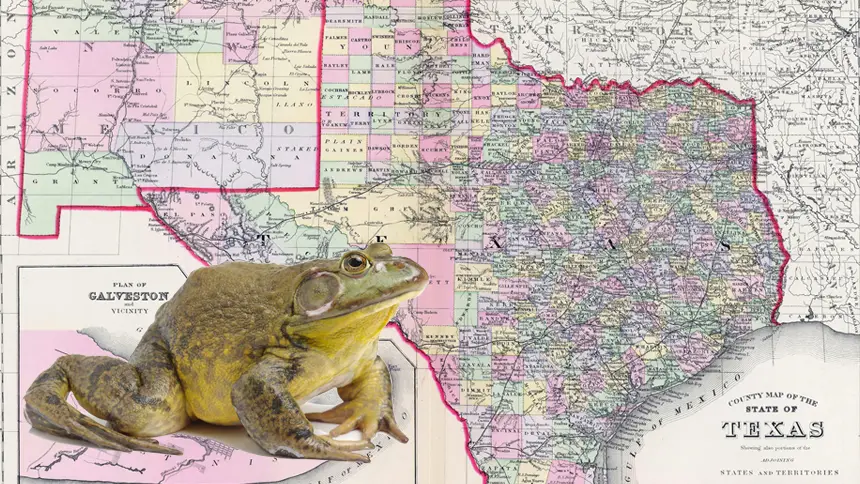
32 Frogs & Toads Found in Texas (With Pictures)
Did you know that Texas is home to more than 30 different species of frogs and toads? That’s a lot of amphibians! In this post, we’ll take a look at each of these species, along with photos of the critters in their natural habitats.
So if you’re planning to visit the lone star state, or you already live here, be on the look out for the amazing frogs and toads!
Page Contents
American Toad
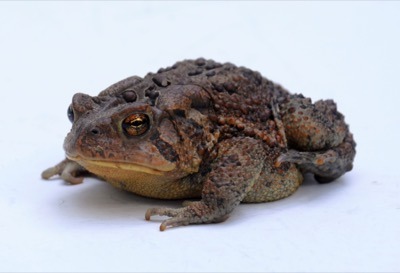
American Toads are small to medium-sized amphibians with dry, warty skin. They typically have brown or olive-colored upper parts with dark spots, and their undersides are usually white, cream, or yellow.
These toads can be found in a variety of habitats throughout the state of Texas, including woodlands, prairies, and even some urban areas. American Toads are mostly nocturnal creatures, and they spend most of their time hiding in burrows or under rocks and logs during the day.
Great Plains Toad
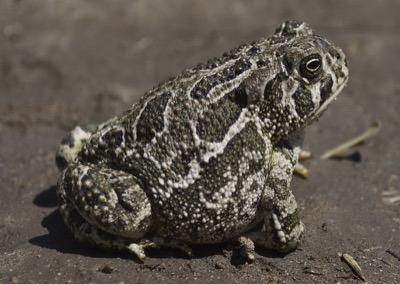
The Great Plains Toad is a species of toad found in the Great Plains region of the United States. They are typically brown or gray in color and can grow up to 6 inches in length. They are most commonly found in Texas, where they live in grasslands and open woodlands.
Green Toad
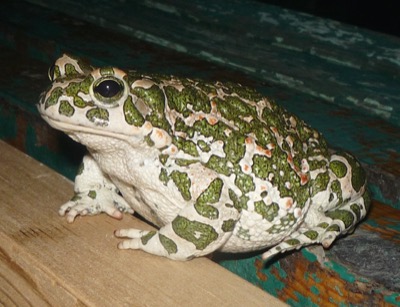
Green Toads are a species of toad found throughout much of Texas. They are easily identifiable by their green coloring, and they can be found in a variety of habitats, from forests to grasslands. Green Toads are generally shy creatures, preferring to stay hidden under cover when possible. However, they will sometimes venture out into the open to sun themselves or to look for mates.
Houston Toad
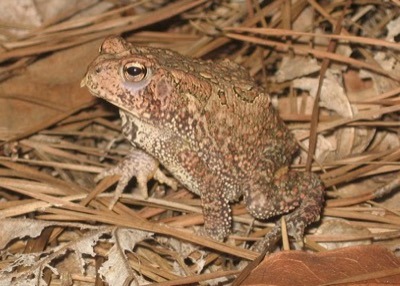
The Houston Toad is a small, brown toad that is usually found near water. It has a wide head and blunt nose, and its eyes are set far apart. It has short, stocky legs and webbed toes. The Houston Toad is found in east and central Texas.
Red-spotted Toad
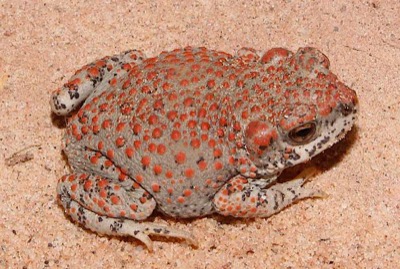
The red-spotted toad is a small, squatty amphibian that ranges in color from olive green to gray or brown. It has large, wart-like lumps all over its body and a distinct red spot on the top of its head. This toad is found throughout much of Texas, preferring moist habitats near ponds and streams.
Texas Toad
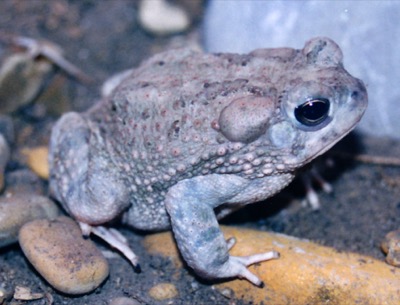
The Texas Toad was once classified as a subspecies of the American Toad, but has since been elevated to full species status. The Texas Toad is a small toad, reaching a maximum length of around 4 inches (10 cm). It is brown or reddish-brown in color, with a light-colored stripe running down the center of its back. The Texas Toad has large, prominent eyes, and its skin is covered in small warts.
Fowler’s Toad
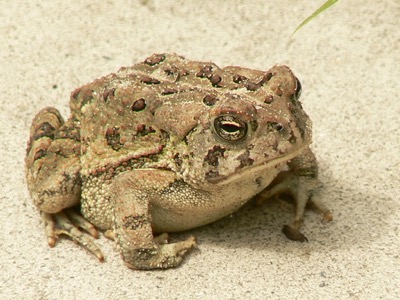
The Fowler’s Toad is a medium-sized toad with a smooth, dark brown or black body. Its skin is covered in small, red spots and it has a pale stripe down its back. The Fowler’s Toad has bulging eyes and a wide mouth filled with small, sharp teeth.
Woodhouse Toad
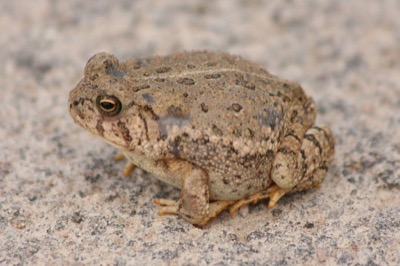
The Woodhouse Toad is a medium-sized, dark-colored toad with a light stripe down the middle of its back. It is found throughout most of Texas, except for the far western and southeastern parts of the state. Woodhouse Toads live in a variety of habitats, including forests, open fields, and suburban areas.
Gulf Coast Toad
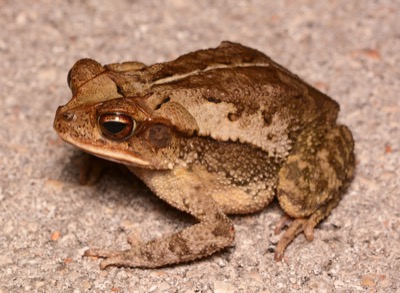
The Gulf Coast Toad is a small, brown toad with a wide stripe down its back. It is found in the eastern part of Texas, from the Louisiana border to just south of San Antonio. They prefer moist, grassy areas near ponds and streams.
Giant Toad
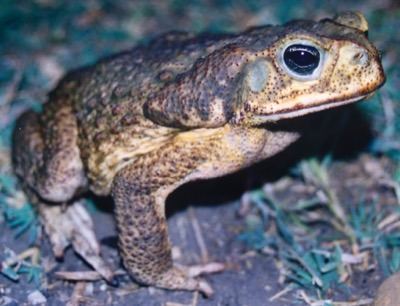
The Giant Toad, also known as the Rhinella horribilis, is a large species of toad found in Texas. They can reach up to 8 inches in length and are typically a dark green or brown color with yellow spots on their backs. These toads live near water sources such as ponds, swamps, and rivers, and lakes.
Mexican White-lipped Frog
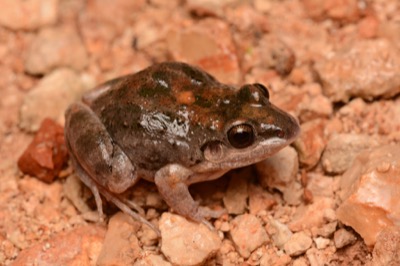
The Mexican White-lipped Frog is a small, dark amphibian that ranges in color from olive green to black. They have a white stripe along their upper lip and are found throughout Central America and Mexico. In Texas, they are mainly located in the Rio Grande Valley.
Blanchard’s Cricket Frog
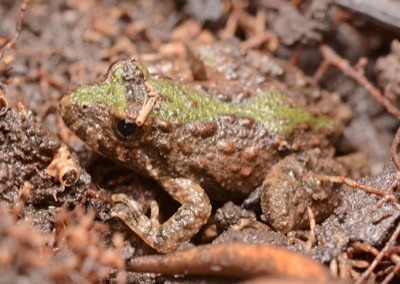
The Blanchard’s Cricket Frog is a small frog that can be found in Texas. They have a light brown body with dark spots, and they are typically found near water. These frogs are difficult to spot, as they stay hidden among the vegetation. They feed on insects, and their mating call is a high-pitched chirp.
Spring Peeper
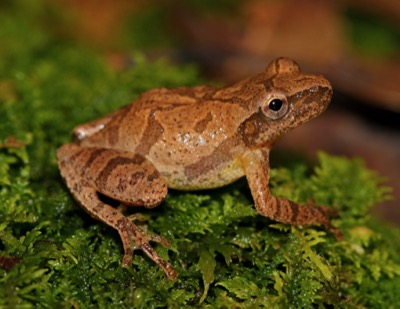
The Spring Peeper is a small frog, about 1 inch long, with a green body and brown markings. They are found throughout most of Texas, but are more common in the eastern part of the state. Spring Peepers live near ponds and streams, and they hibernate under logs or in the mud at the bottom of ponds during the winter. They eat insects, and their mating call is a high-pitched trill.
Squirrel Tree Frog
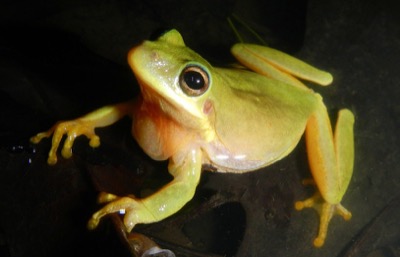
The squirrel tree frog is a small, light-colored frog that can be found throughout Texas. They get their name from the fact that they often live in trees, where they feed on insects. Squirrel tree frogs are generally shy and difficult to see, but they can sometimes be spotted near the edge of ponds or streams.
Green Tree Frog
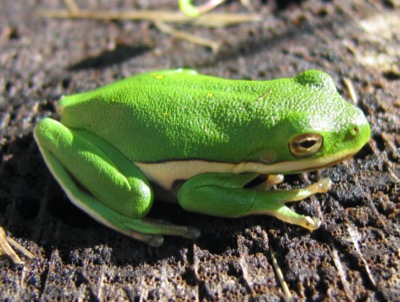
The American Green Tree Frog is a small, green frog with a white stripe along the side of its head. It is found in Texas and other southern states.
Gray Tree Frog
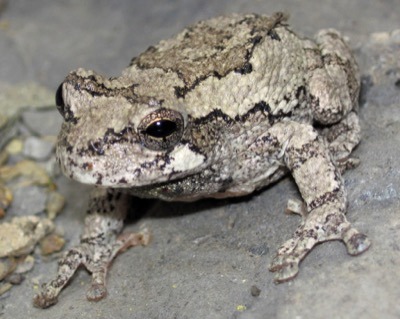
The Gray Tree Frog is a small, green frog that is found in many parts of the United States. They are usually gray or light green in color, and they have a white stripe down their back. They live in trees and other high places, and they eat insects.
Cope’s Gray Tree Frog
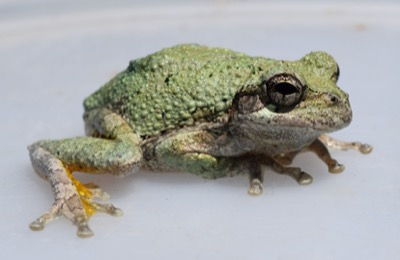
The Cope’s Gray Tree Frog is a small, slim tree frog that ranges in color from light green to gray. They have a dark band running from their nose to the back of their eyes, and their belly is white. This species can be found throughout Texas, usually in wooded areas near ponds and streams.
Mexican Smilisca
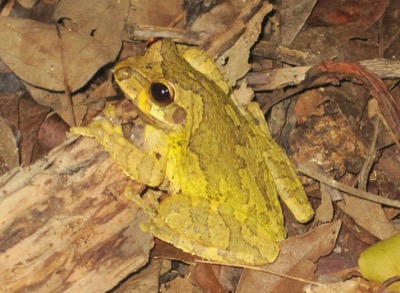
Mexican Smilisca are a species of frog found in Mexico and Texas. They are green or brown in color, and have a smooth skin.
Eastern Narrow-mouthed Toad
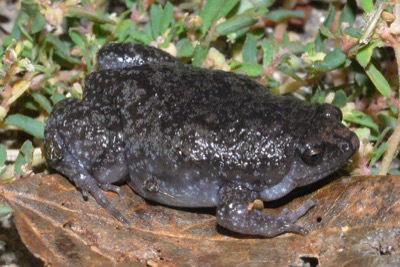
The Eastern Narrow-mouthed Toad is a small, brown toad with a light stripe down its back. It lives in eastern Texas and can be found near ponds and streams. This toad is mostly nocturnal, and during the day it hides under rocks or in burrows.
Sheep Frog
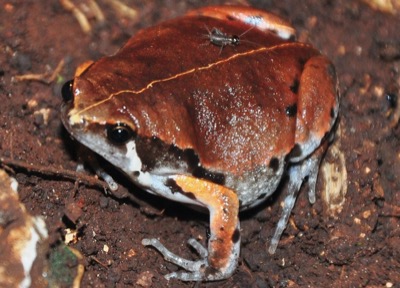
The Sheep Frog is a small, light-colored frog found throughout Texas. They have smooth skin and pointed snouts, and are generally difficult to see due to their camouflage. Sheep Frogs live in moist areas near ponds and streams, and feed on insects and other small invertebrates.
Southern Leopard Frog
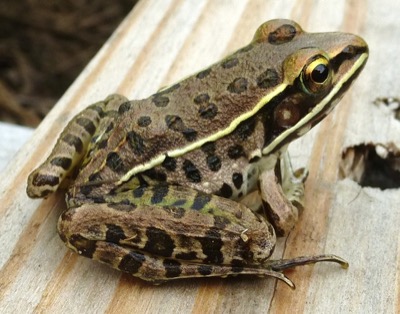
The Southern Leopard Frog is a large frog that can be easily identified by its spotted skin. This amphibian is found throughout Texas, usually inhabiting ponds, marshes, and other wet areas. The Southern Leopard Frog is a predator, feeding on insects, small fish, and even other frogs.
Rio Grande Leopard Frog
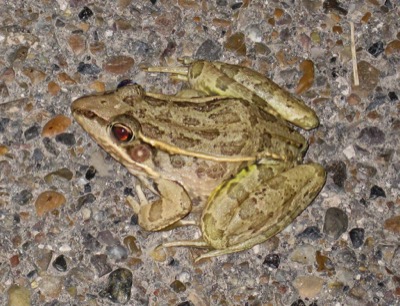
The Rio Grande Leopard Frog is a species of frog found in the south-central and southwestern United States. It is a relatively large frog, growing to a length of about 7 cm (2.8 in). The dorsal surface is green or olive, with numerous dark spots or blotches.
Plains Leopard Frog
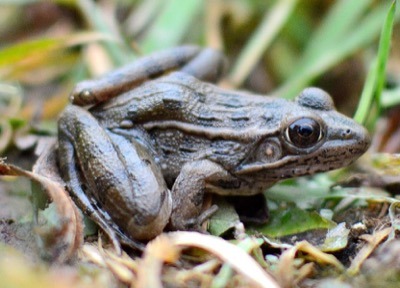
The Plains Leopard Frog is a medium-sized frog with a greenish brown back and white underparts. The Plains Leopard Frog is found in the eastern half of Texas, from the Red River to the Rio Grande. They inhabit open areas near water such as prairies, pastures, and agricultural land.
American Bullfrog
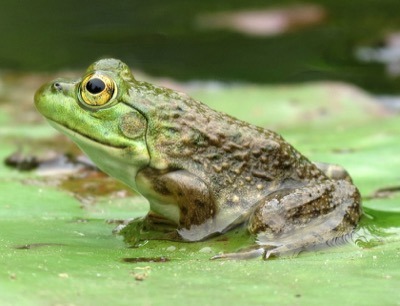
The American Bullfrog is a large, green frog that is found throughout Texas. They are usually easy to spot because of their size and the fact that they tend to stay near water. American Bullfrogs can be found in ponds, lakes, and other bodies of water. They are also known to inhabit wetland areas.
Green Frog
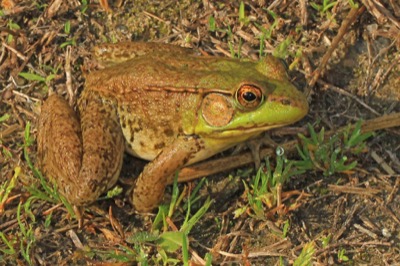
The Green Frog (Lithobates clamitans) is a fairly large frog, similar in appearance to the American Bullfrog.
Pig Frog
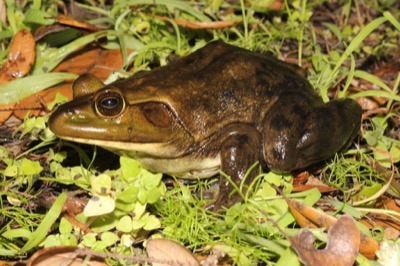
The Pig Frog, Lithobates grylio, is a medium-sized frog found throughout Texas. They have a greenish-gray body with dark spots and are typically found near ponds and other bodies of water. They can grow up to six inches in length and have a lifespan of up to five years.
Pickerel Frog
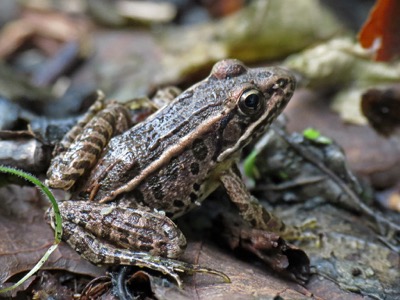
The Pickerel Frog is a medium-sized frog that is usually green or brown in color. They are found throughout Texas, and can be identified by the dark spots on their backs. Their skin is smooth, and they have protruding eyes. Pickerel Frogs live near water, and can be seen swimming or sitting on logs or rocks
Mexican Burrowing Frog
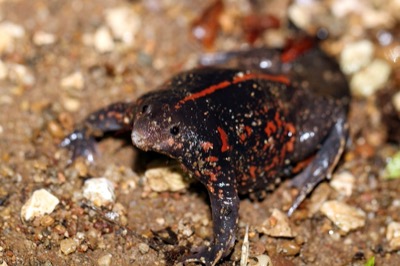
The Mexican Burrowing Frog is a small, dark brown frog that lives in the sandy soils of Texas and Mexico. They are well-adapted to life underground, where they spend most of their time. They have small eyes and a pointed snout, which helps them dig through the sand quickly. They are most active at night, when they come
Mexican Spadefoot Frog
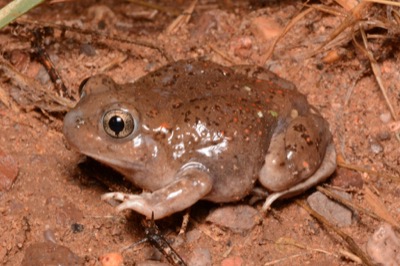
The Mexican spadefoot toad is a small, brown amphibian that ranges in size from 2.5 to 4 inches long. It has a stout body and a broad head with protruding eyes. The toes are webbed, and the hind feet are enlarged and flattened into paddles for swimming.
Plains Spadefoot Toad
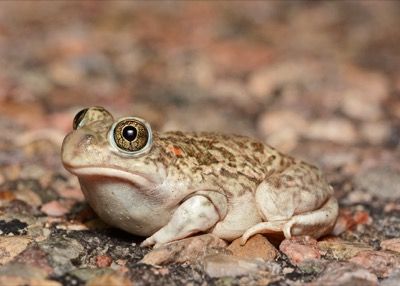
The Plains Spadefoot Toad, a small amphibian found in Texas, is so named because of the spade-like projection on its hind feet. These toads are typically light brown or gray in color and have dark spots or stripes running along their backs. They are usually found near ponds and other bodies of water.
Rio Grande Chirping Frog
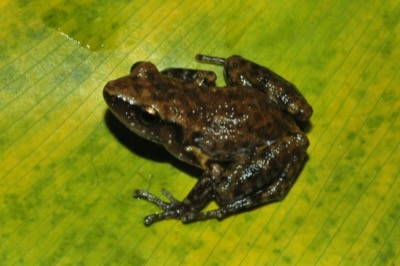
The Rio Grande Chirping Frog is a small, green frog that can be found in Texas. They are about 2 inches long and have a dark stripe running down their spine. These frogs make a unique noise that earned them their name and can be heard from up to 100 feet away. They live near water and are most active at night.
Barking Frog
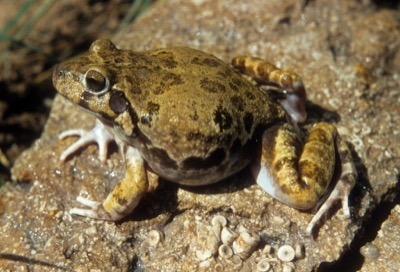
The Barking Frog is a small, brown frog with a white stripe down its back. It can be found in the eastern part of Texas. The frog gets its name from the high-pitched mating call it makes during the spring and summer months.

Leave a Reply